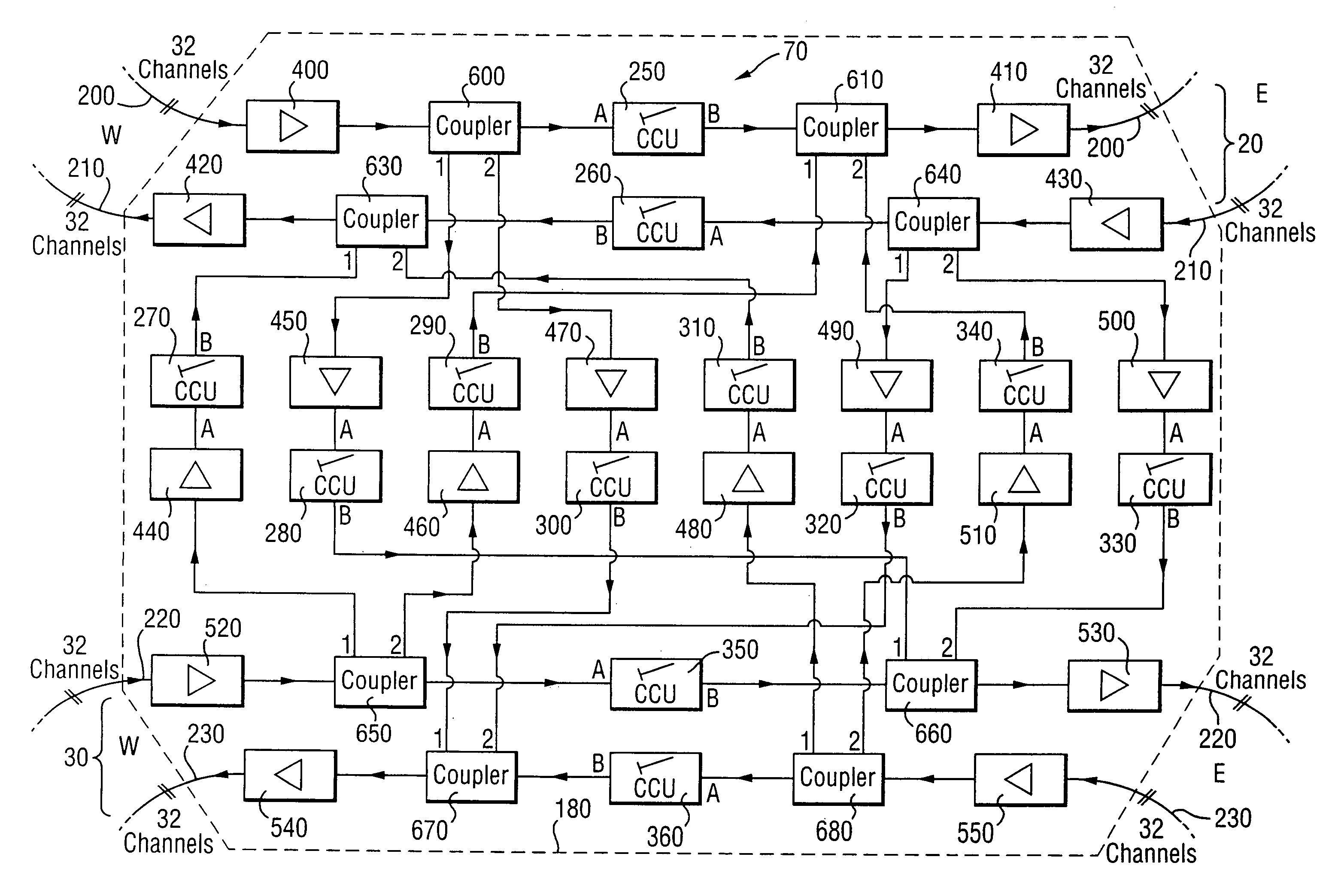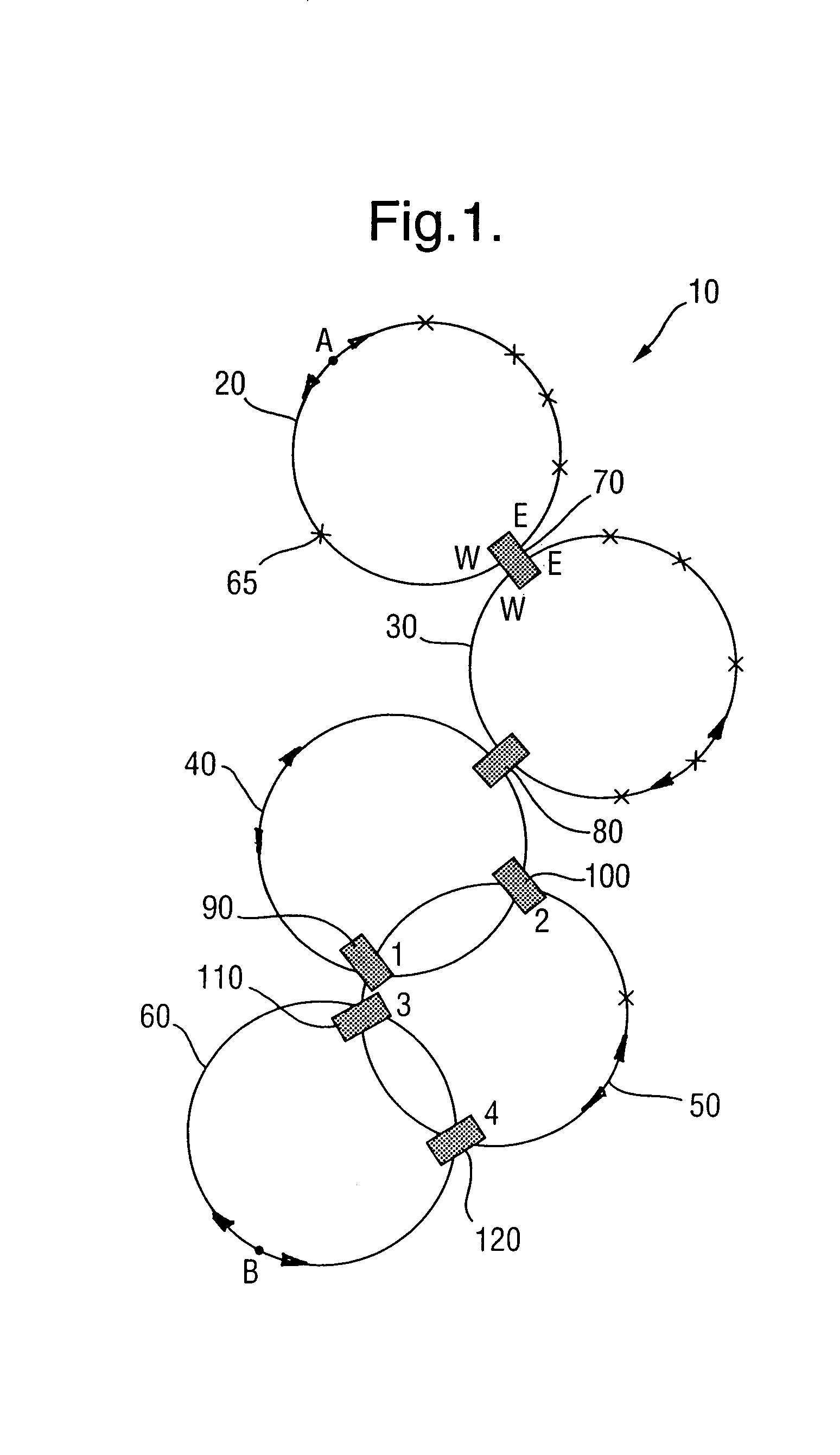Optical communication system
a communication system and optical technology, applied in the field of optical communication systems, can solve the problems of imposing a severe limitation on the communication bandwidth which can theoretically be provided, limiting the bandwidth of the communication system, and not divulging the practical hardware for such routing
- Summary
- Abstract
- Description
- Claims
- Application Information
AI Technical Summary
Benefits of technology
Problems solved by technology
Method used
Image
Examples
Embodiment Construction
[0059]Referring now to FIG. 1, an optical communication system according to the invention is indicated generally by 10. The system 10 comprises five interlinked bi-directional optical communication rings 20, 30, 40, 50, 60. The rings 20, 30, 40, 50, 60 are of diameters in a range of 10 km to 100 km and are operable to provide communication links at national and regional level. The rings 20, 30 include repeater nodes, for example a repeater node 65, represented by crosses around the rings 20, 30. Moreover, the ring 20 is connected through an interface 70 to the ring 30. Likewise, the ring 30 is connected through an interface 80 to the ring 40. The ring 40 is connected at first and second positions thereon through interfaces 90, 100 respectively to the ring 50. Likewise, the ring 50 is connected at third and fourth positions thereon through interfaces 110, 120 respectively to the ring 60. The interfaces 70 to 120 are similar and will be described in more detail later.
[0060]Each of the...
PUM
 Login to View More
Login to View More Abstract
Description
Claims
Application Information
 Login to View More
Login to View More - R&D
- Intellectual Property
- Life Sciences
- Materials
- Tech Scout
- Unparalleled Data Quality
- Higher Quality Content
- 60% Fewer Hallucinations
Browse by: Latest US Patents, China's latest patents, Technical Efficacy Thesaurus, Application Domain, Technology Topic, Popular Technical Reports.
© 2025 PatSnap. All rights reserved.Legal|Privacy policy|Modern Slavery Act Transparency Statement|Sitemap|About US| Contact US: help@patsnap.com



